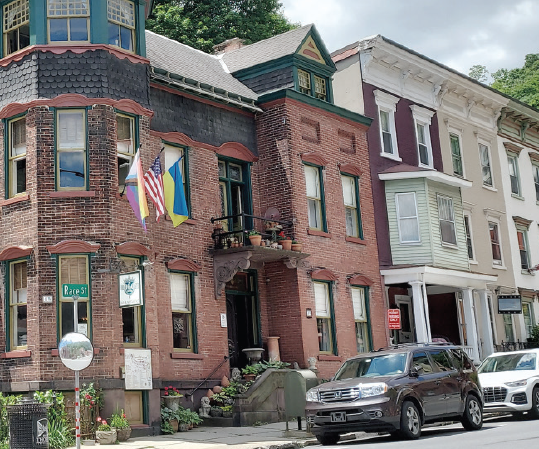Just south of Carmel is tucked a little-known gem where you can escape back to California’s coastline as it was over a century ago: Point Lobos State Natural Reserve. Beautiful vistas, pounding sea surf, a network of easy hiking trails, and history trapped in time make it the perfect place to visit.
Lots for sale
A seasonal destination for Indigenous tribes for over 2,000 years, after its discovery by Europeans in 1769, Point Lobos went through many phases: rancho, livestock pasture, whaling station, abalone cannery, granite quarry, and shipping point for a nearby coal mine. Industrial and residential development seemed to guarantee that the area would follow the pattern of other coastal towns. It was parceled out to become Point Lobos City by the Carmelo Land & Coal Company in 1890. Residential lots went for $50 each.
In 1898, local entrepreneur A.M. Allan purchased Point Lobos as a business investment and residence, although it would take another 20 years before he finally bought back lots that had already been sold. In 1933, the State purchased Point Lobos from Allan’s heirs for $631,000. Later additions expanded the park to 554 acres, plus the addition of 775 submerged acres, creating one of the nation’s first underwater reserves.
A magnificent mosaic
My most recent visit on a sunny day revealed Point Lobos in all its visual and geological beauty. Wherever you walk, you see the tectonic forces that govern the region.
Deep coves. Gnarled rocks layered in black, red and palest gold, heaved up from the sea. High craggy headlands crowned with wild lilac, brilliant poppies and busy butterflies. Toothy islets of stone puncture the restless waves at various distances, ancient markers of a gradually eroding coastline. In the morning, the ocean garbs itself in every shade from turquoise to indigo, paling to quicksilver as the sun crosses to the west.
Multiple trails meander about the reserve. Most follow the coastline, but some crisscross the peninsula and take hikers up among meadows and woodlands. Those along the southwest side are the most scenic, in particular the South Shore trail, which extends from Sea Lion Point to Pelican Point, passing Weston Beach, Hidden Beach and China Cove. Visitors can easily step off to visit the beaches.
The peaceful Cypress Grove loop trail escorts you to Allan Memorial Grove and winds through one of the only two naturally growing stands of Monterey Cypress in the world. The linked Sea Lion Point and Sand Hill Trails are short, but provide a vista of the coast, as well as an added trail that descends to the Devil’s Cauldron, awash with surf, harbor seals and sea lions. Glimpsing the development that has occurred north and south of Point Lobos, you are thankful that Allan preserved this stunning place.
Whaler's cove
Inside a protected elbow of land is Whaler’s Cove, home of the Whaler’s Cabin & Whaling Station Museum, and well worth the visit. The cabin, occupied and used from 1851–1983, was added in 2007 to the National Register of Historic Places.
Opened in 1987, the museum showcases the region’s diverse cultural history. Originally constructed by Chinese fishermen, it was subsequently used by Japanese whalers and abalone fishermen, and World War II army soldiers. Across the cove is where whale carcasses were hauled up; beside the cabin sit the large cauldrons in which blubber was boiled down to whale oil. Flanked by a massive cypress whose roots have merged with the wooden wall, the cabin displays a collection of intriguing artifacts, including archeological “rubbish” such as clay pipes, bottles and patterned china.
Enjoy the easy trail that takes you from the cabin to Granite Point. You’ll glimpse non-native flowers, remnants of the gardens of the Chinese and Japanese families’ homes that once dotted the area. Otters enjoy the quiet waters, and there’s a chuffing “blow hole” at Granite Point where the waves strike to explode water through a stone hollow, just like a whale coming up for air. In season, gray whales can be seen migrating past Point Lobos, an added feature of this hidden gem of a park.
Easily reached from Highway 1, Point Lobos (https://www.parks.ca.gov/?page_id=571) is the perfect day trip to combine with a visit to Monterey or Carmel. The park is day use only. Admission is $10. You can only park in designated lots; parking is limited, so go in morning or late afternoon; photography is best in the morning. There are guided walks, and park rangers and docents are available to answer questions. Pack your own water and food. Pets are not permitted in the park.





